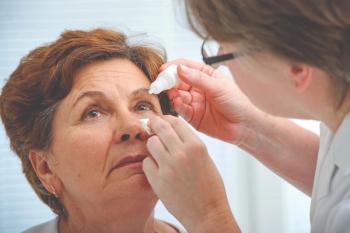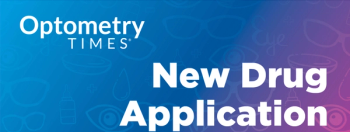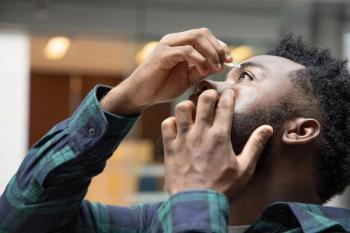
Overview of Presbyopia
Francis S. Mah, MD, and Andrew S. Morgenstern, OD, FAAO, FNAP, review the impact of presbyopia on quality of life as well as current treatment options and unmet needs for disease management.
Episodes in this series

Barry Eiden, OD, FAAO, FSLS: Hello, and thank you for joining this Optometry Times® and Ophthalmology Times® Insights on “The Role of Miotic Agents in the Management of Presbyopia.” I’m Barry Eiden, the president and medical director of North Suburban Vision Consultants and Eye care Specialties of Illinois in Deerfield, Illinois. I’m the CEO and a cofounder of the International Keratoconus Academy of Eye Care Professionals. I’m joined by Dr Francis Mah, an ophthalmologist and the director of cornea service and a codirector of refractive surgery service at Scripps Clinic in La Jolla, California; and Andrew Morgenstern, an optometrist at Walter Reed National Military Medical Center in Bethesda, Maryland and the president of the International Keratoconus Academy of Eye Care Professionals.
Presbyopia is ubiquitous and is an eventuality for every human being on earth. Estimates suggest that over 1.8 billion individuals globally have presbyopia. This represents over one-quarter of the world’s population. As common and as accepted as this condition is, it can have a significantly negative impact on an individual’s visual function, overall quality of life, and emotional state. Our panel will discuss general concepts relating to presbyopia and explore the various choices that eye care professionals have to manage it, with a special emphasis on the emerging role miotics play in our armamentarium of presbyopia treatment options. Let’s begin.
Dr Mah, can you share your thoughts on the impact presbyopia has on a patient’s quality of life?
Francis S. Mah, MD: As you said, it has a huge impact on our patients. As eye care specialists, we see this multiple times a day. I know that you 2 see it a bit more frequently than I do. In general, presbyopia affects us more today because of our digital devices: cell phones, watches, iPads, computers, and so forth. There’s a lot of frustration. There’s a lot of disability in terms of day-to-day activities, and even work productivity is affected. Not to mention, in terms of social activities—going out at night, looking at menus, bills, and so forth—there’s a huge impact. If you spend half a day in any eye care specialist’s office, you can hear the misery and torment that presbyopia is causing our patients.
Barry Eiden, OD, FAAO, FSLS: That’s very true. Morgenstern, can you review with us some of the options that you’re using to address presbyopia and where they might fall short?
Andrew S. Morgenstern, OD, FAAO, FNAP: Thanks, Barry, for asking the question. This is so important to our profession and our patients. When I went to optometry school, the No. 1 complaint we started to hear about as soon as we became student eye doctors was, “I can’t read up close.” It happens in every exam, especially for those over 40, 42, 45 years old. Because that’s the chief complaint that comes in the front door, we have to address that chief complaint.
Our options include the most basic glasses, whether they’re straight-up reading glasses or bifocal glasses of the old type with the line in them, called executive bifocals. They could be progressive bifocals, which have no line in the lenses, so you can see from top to bottom. Those are great options, but we also have some great technology in contact lenses. We have multifocal contact lenses—you put 1 in each eye. With those contact lenses, you can essentially see with bifocals in both eyes. Both ophthalmologists and optometrists can prescribe contact lenses. We can do something called monovision, where we do 1 eye for far and 1 eye for near. There are surgical options too. I’m sure Dr Mah has done monovision surgically with LASIK [laser-assisted in situ keratomileusis or PRK [photorefractive keratectomy]. There are medications that can help us read up close.
It’s a problem. I never realized how bad it was until I became presbyopia myself. It feels like the worst thing on earth. Until it happened to me, I never understood how big of an impact it had on life. But we have all these great options out there.
Barry Eiden, OD, FAAO, FSLS: Even though we have great options, we haven’t found the holy grail of treatment for presbyopia, correct? Where do the options fall short? What might be the attributes of some newer technologies to address presbyopia, Dr Mah?
Francis S. Mah, MD: From a surgical standpoint, we have LASIK, PRK, clear lens extractions, and phakic IOL [intraocular lens] surgery. But we’re still searching for that Holy Grail for, not only an excellent solution for that range of vision but also to mitigate any adverse effects. For example, not everybody can do monovision because of the brain and how adaptable the brain is. As far as surgical options, we’ve got potential complications, and we can’t reverse the surgical options. As far as glasses and contacts, I’ll let Andy and you discuss the pitfalls there. Then we’ve got eye drops. Everybody is searching for that Holy Grail—that doesn’t have adverse effects and is permanent, lasts a long time, and gives us the full range of binocular vision.
Transcript edited for clarity
Newsletter
Want more insights like this? Subscribe to Optometry Times and get clinical pearls and practice tips delivered straight to your inbox.














































.png)


